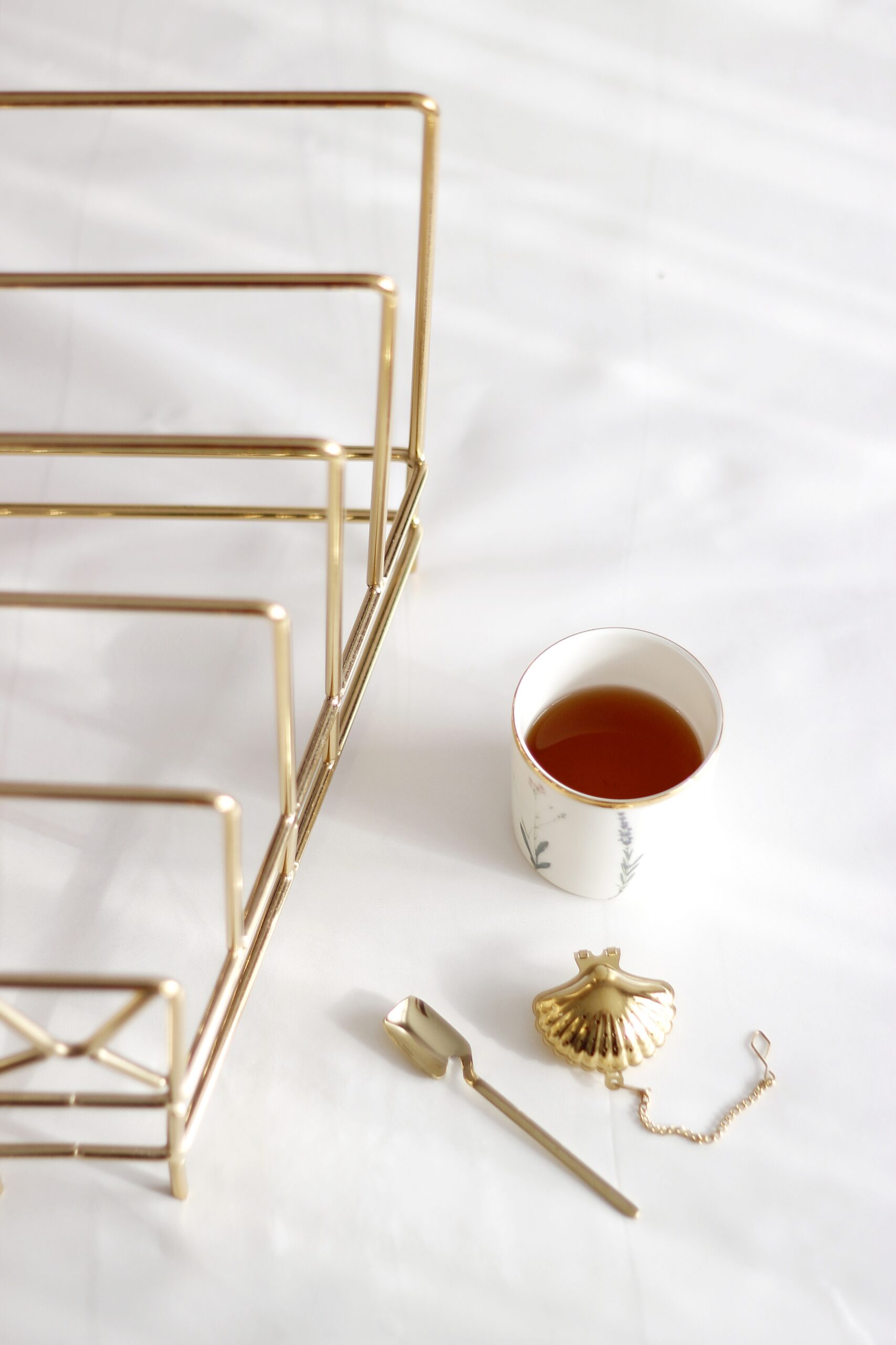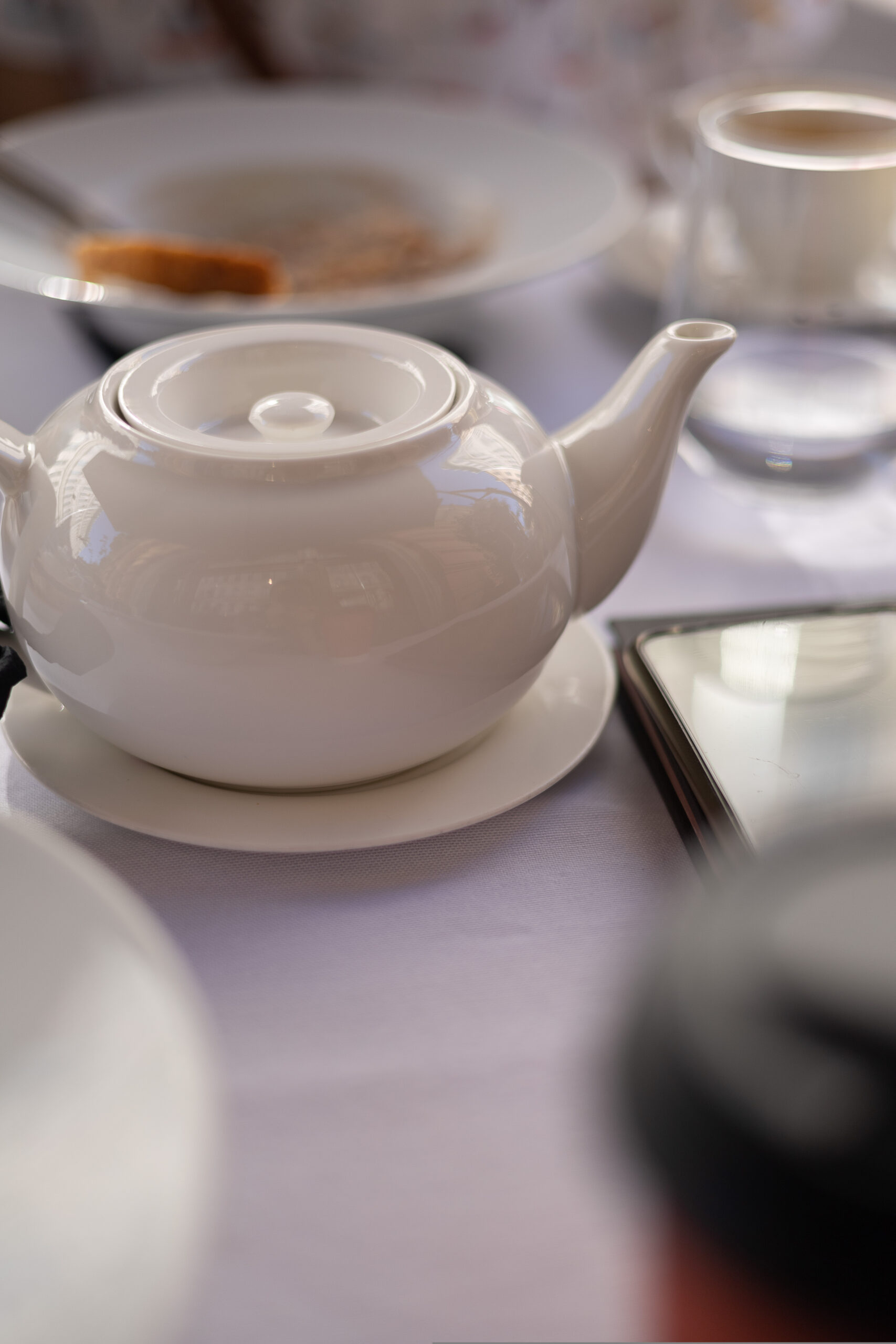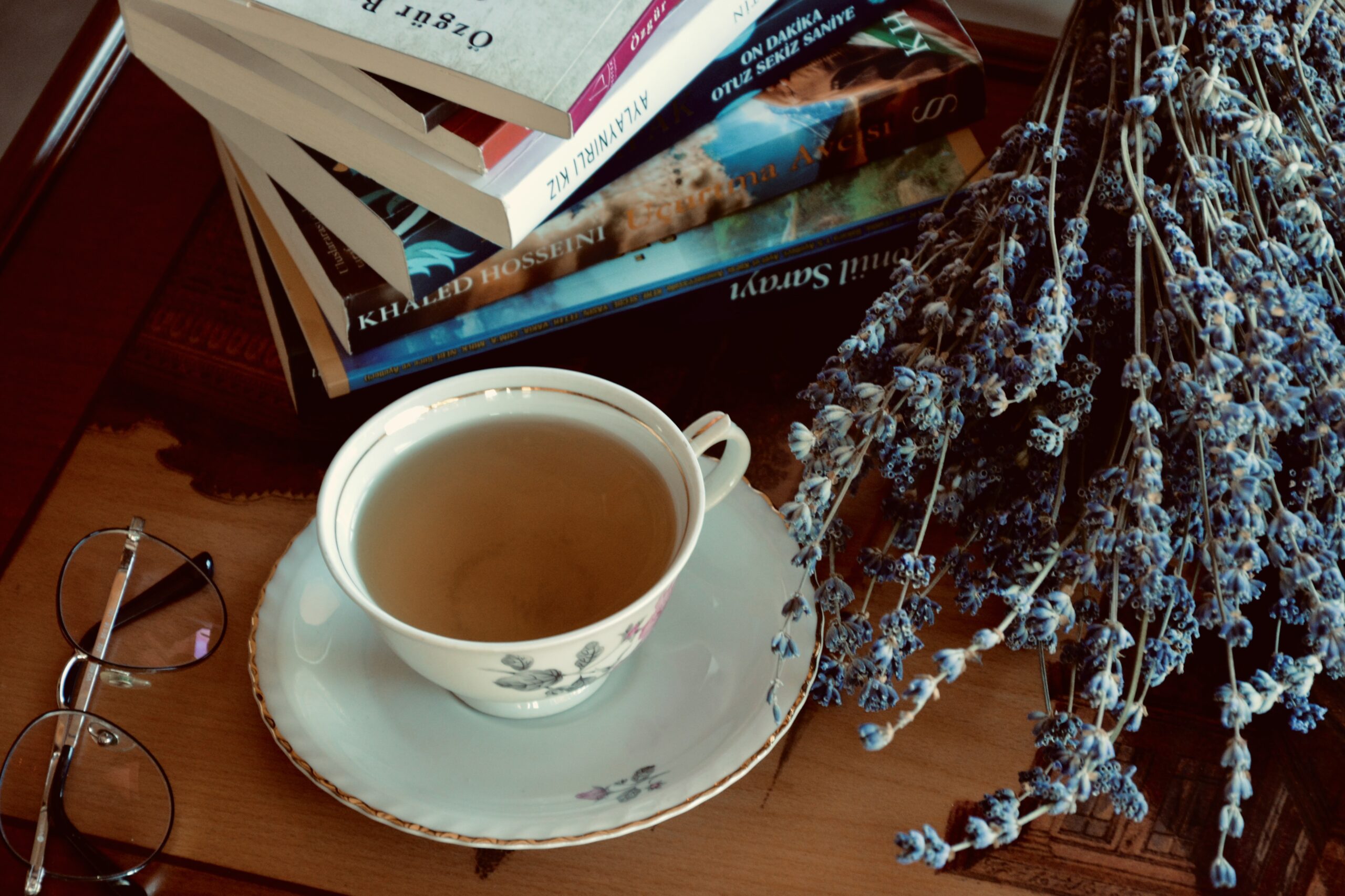Immerse yourself in the enchanting world of Chinese tea as we journey through its fascinating history, intricate rituals, and delightful varieties. Join us at Tastepan.com as we explore the depths of this ancient art form, unveiling the secrets behind each flavorful cup. From the mythical tales of tea’s origin to the meticulous brewing methods passed down through generations, prepare to be captivated by the art of tea in China. Let us take you on a sensory adventure that will awaken your taste buds and deepen your appreciation for the rich tapestry of global flavors.

History
Discovery of Tea
The history of tea in China dates back thousands of years. Legend has it that the discovery of tea happened purely by accident. Emperor Shen Nong, who was known for his interest in plants and herbs, was sitting beneath a wild tea tree when a leaf fell into his boiling water. Intrigued by the aroma and flavor of the infused water, he decided to taste it. This marked the serendipitous discovery of tea.
Development of Tea in China
Tea cultivation and production began to flourish during the Tang Dynasty (618-907 AD). This period saw the introduction of tea plantations and the development of better processing techniques, leading to an increase in the popularity of tea. It was during this time that tea started to be enjoyed as a beverage rather than just a medicinal herb.
Tea and Buddhism
Tea and Buddhism share a deep connection that dates back centuries. Monks in ancient China discovered that tea helped them stay awake during long meditation sessions, aiding in their spiritual practices. Tea became an integral part of Buddhist rituals, and its consumption spread as Buddhism gained popularity throughout China.
Tea in Imperial China
During the Song Dynasty (960-1279 AD), tea became a symbol of status and refinement among the elite class in Imperial China. The art of tea preparation and appreciation reached its zenith during this period. Emperors and nobles held elaborate tea ceremonies to showcase their wealth and sophistication. Tea had become an integral part of Chinese culture.
Rituals
Gongfu Cha: The Art of Tea Brewing
Gongfu Cha, also known as the “art of tea-making with skill,” is a traditional Chinese tea brewing method that emphasizes precision and attention to detail. This ritual involves using a small teapot and multiple short infusions to extract the full flavor and aroma of the tea leaves. It is a labor-intensive process that requires practice and patience.
Tea Ceremonies: A Symbol of Hospitality
Tea ceremonies in China are not just about brewing and drinking tea; they are also a symbol of hospitality and respect. Offering tea to guests is considered an essential act of graciousness and friendship. The host meticulously prepares and serves the tea, while the guests appreciate the nuances of the tea’s flavor and aroma. This ritualistic experience fosters deep connections between people.
Tea Etiquette: Do’s and Don’ts
When participating in a Chinese tea ceremony or enjoying tea in China, it is important to observe proper tea etiquette. Some do’s and don’ts include avoiding blowing on your tea to cool it down, always holding the teacup with both hands when receiving it from the host, and refraining from stirring the tea excessively. Respecting these customs not only shows your appreciation for the tea but also demonstrates your understanding of Chinese culture.

Varieties
Green Tea: The Most Popular Type
Green tea is the most widely consumed type of tea in China. It is made from unoxidized tea leaves and is known for its delicate flavor and refreshing qualities. Famous varieties of green tea include Longjing (Dragon Well), Biluochun, and Bi Luo Chun, each with its unique characteristics and production methods. Green tea is treasured for its health benefits and is often enjoyed throughout the day.
Oolong Tea: The Perfect Balance
Oolong tea is a semi-oxidized tea that falls between green tea and black tea in terms of oxidation levels. It is highly prized for its complex flavors and aromas, which can range from floral and fruity to toasty and nutty. Some well-known Chinese oolong teas include Tie Guan Yin, Da Hong Pao, and Shui Xian. Oolong tea is often celebrated for its ability to cleanse the palate and aid in digestion.
Black Tea: A Robust and Bold Flavor
Black tea, known as “red tea” in China due to the color of its infusion, undergoes full oxidation. It has a strong and robust flavor profile with notes of malt, caramel, and sometimes even floral undertones. Popular Chinese black teas include Dian Hong, Keemun, and Yunnan Gold. Black tea is enjoyed to wake up and energize the senses.
White Tea: The Delicate Elixir
White tea is the least processed among all the teas. It is made from young tea leaves and buds that are plucked before they fully open. White tea has a delicate and subtle flavor, evoking notes of flowers and honey. Bai Hao Yin Zhen (Silver Needle) and Bai Mu Dan (White Peony) are well-known examples of Chinese white teas. White tea is cherished for its high levels of antioxidants and its calming effect on the body.
Pu-erh Tea: Aged and Unique
Pu-erh tea is a fermented tea that is aged for several years, sometimes even decades. It is known for its earthy and mellow flavor profile, with hints of wood, moss, and dried fruits. Pu-erh tea comes in two forms: raw (sheng) and ripe (shou). Famous Pu-erh tea regions in China include Yunnan and Xishuangbanna. Pu-erh tea is often revered for its digestive properties and its ability to improve cholesterol levels.
Tea and Chinese Culture
Tea Houses: Centers of Socialization
Tea houses have been an integral part of Chinese culture for centuries. They serve as places where people gather to socialize, relax, and enjoy tea. Traditional tea houses provide a serene and tranquil environment where customers can appreciate different tea varieties while engaging in conversation or playing games. Tea houses are an embodiment of Chinese hospitality and community.
Tea as a Medicine in Traditional Chinese Medicine
In traditional Chinese medicine, tea has been valued for its medicinal properties for thousands of years. Tea is believed to have cooling and purifying effects on the body and is used to treat various ailments. Different types of tea are prescribed based on their specific properties, such as green tea for detoxification, oolong tea for digestion, and pu-erh tea for weight management. Tea continues to play a significant role in maintaining health and well-being in Chinese culture.
Tea in Chinese Art and Literature
Tea has long been an inspiration for Chinese artists and writers. Tea-themed paintings, calligraphy, and poems are abundant in Chinese art and literature. The act of enjoying tea is depicted as a moment of tranquility and reflection, capturing the essence of Chinese philosophy. Tea’s presence in art and literature reflects its deep cultural significance and the reverence it holds in Chinese society.

Tea and Health Benefits
Antioxidant Properties of Tea
Tea is known for its rich antioxidant content, particularly in the form of catechins. These antioxidants help protect the body against free radicals, which can cause cellular damage and contribute to various health problems. Regular consumption of tea is believed to boost the immune system and promote overall well-being.
Boosting Metabolism and Promoting Weight Loss
Certain types of tea, such as green tea and pu-erh tea, have been associated with weight loss benefits. They are believed to increase metabolism and aid in the breakdown of fats in the body. Tea is often included as part of weight loss regimens in China, promoting a healthy and balanced lifestyle.
Improving Heart Health
Tea, especially green tea, is known to contribute to heart health. Studies have shown that regular tea consumption may help reduce the risk of heart disease by lowering bad cholesterol levels and improving blood vessel function. The antioxidants present in tea also help protect against oxidative stress, which can lead to heart-related issues.
Enhancing Brain Function and Concentration
The combination of caffeine and other natural compounds found in tea can have positive effects on brain function. Tea has been linked to improved alertness, focus, and mental clarity. It is often used by students and professionals in China as a natural way to enhance cognitive performance.
Promoting Digestive Health
Tea, particularly oolong tea and pu-erh tea, is believed to have digestive benefits. These types of tea can help stimulate the production of digestive enzymes and aid in the digestion of fats and proteins. Drinking tea after meals is a common practice in China to support healthy digestion.
Tea Tourism in China
Famous Tea Plantations and Gardens
China is home to numerous famous tea plantations and gardens, each with its unique characteristics and tea varieties. Some notable destinations for tea tourism include the Longjing Village in Hangzhou, known for its production of Longjing tea, and the Wuyi Mountains in Fujian, renowned for its rock tea and beautiful scenery. Exploring these tea-growing regions allows visitors to immerse themselves in the world of Chinese tea culture.
Tea Tours and Experiences
Tea tours and experiences have become increasingly popular in China. Travelers are offered the opportunity to visit tea plantations, witness the tea-making process, and participate in tea ceremonies. These tours provide an in-depth understanding of the tea production process and allow visitors to taste and appreciate different tea varieties. Engaging in tea tourism in China is a true sensory experience that leaves a lasting impression.
Chinese Tea Etiquette
Choosing the Right Tea
When participating in a Chinese tea ceremony or selecting tea to enjoy, it is important to consider the occasion and personal preferences. Chinese tea houses offer a wide variety of teas, each with its unique characteristics. Understanding the flavors, aromas, and health benefits associated with different tea types will help in making the right choice.
Preparing and Serving Tea
Preparing and serving tea in China is a deliberate and meticulous process. The teapot and tea cups are warmed beforehand to enhance the flavor and aroma of the tea. The tea leaves are rinsed with hot water to awaken their flavors before the first infusion. The tea is then poured into small cups for guests to enjoy. The host takes great care in ensuring a seamless and enjoyable tea-drinking experience.
Tea Tasting and Appreciation
Tea tasting and appreciation involve using all the senses to fully experience the tea. The appearance, aroma, taste, and texture of the tea are carefully observed and appreciated. Tea tasters focus on the color of the tea leaves, the fragrance of the infused liquid, the taste profile, and the mouthfeel. This allows for a deeper understanding of the tea’s complexity and helps in developing a discerning palate.
Popular Tea Ceremonies in China
Kung Fu Cha: The Essence of Chinese Tea Culture
Kung Fu Cha, meaning “skillful tea,” is a traditional tea ceremony that showcases the essence of Chinese tea culture. This ceremony emphasizes the mastery of tea brewing techniques, such as the art of pouring, steeping, and serving tea. Kung Fu Cha represents a harmonious balance between precision, simplicity, and elegance.
Yum Cha: The Dim Sum Tea Tradition
Yum Cha, which translates to “drink tea” in Cantonese, is a popular tea tradition in southern China, particularly in Hong Kong. Yum Cha involves enjoying tea alongside a variety of dim sum dishes, such as dumplings, steamed buns, and rice rolls. The teahouse experience is characterized by lively conversations, laughter, and the sharing of good food and tea with friends and family.
Diaocha: Tea Tasting and Appreciation
Diaocha, meaning “tea investigation,” is a tea ceremony focused on the exploration and appreciation of tea. Tea connoisseurs gather to compare and evaluate different tea varieties, discussing their flavors, aromas, and characteristics. Diaocha is a way to deepen one’s knowledge of tea and engage in thoughtful discussions about its nuances.
Teaware: Tools of the Trade
Teapots and Gaiwans
Teapots and gaiwans are commonly used for brewing tea in China. Teapots come in various sizes, materials, and designs, each suited for specific tea types. Gaiwans, on the other hand, are small lidded bowls with saucers used for steeping and serving tea. Both teapots and gaiwans allow for controlled pouring and efficient extraction of the tea’s flavor.
Tea Cups and Bowls
Tea cups and bowls come in different shapes, sizes, and materials. Porcelain and Yixing clay are popular choices for tea cups due to their ability to retain heat and enhance the aroma of the tea. Tea cups with lids are often used for brewing and drinking teas that require shorter steeping times, such as green and white teas.
Tea Trays and Utensils
Tea trays are essential tools used for serving and brewing tea. They collect water spills and keep the brewing area clean. Utensils like bamboo tea scoops, tea strainers, and tea tweezers are used for measuring, filtering, and handling tea leaves. These teaware items contribute to the overall aesthetic and functionality of the tea ceremony.
Future of Tea in China
Innovation in Tea Production and Consumption
China’s tea industry continues to innovate, adopting modern techniques and technology in tea processing and packaging. Tea companies are exploring new ways to preserve the traditional flavors and characteristics of tea while meeting the demands of a modern and global market. Innovation also extends to the consumption of tea, with the emergence of tea-infused beverages and ready-to-drink options.
Tea Exports and Global Influence
China remains one of the world’s largest exporters of tea. Chinese teas are known and appreciated globally for their quality and diversity. As tea culture gains popularity worldwide, traditional Chinese tea ceremonies, tea appreciation, and the health benefits of tea are being embraced in various cultures. China’s tea heritage continues to exert a significant influence on the global tea industry.
Preservation of Tea Traditions
While China embraces innovation, there is also a strong emphasis on preserving the rich tea traditions that have been passed down through generations. Efforts are being made to safeguard ancient tea gardens, promote sustainable farming practices, and educate younger generations about the art of tea. Conservation of tea traditions ensures that the cultural heritage and wisdom associated with tea are cherished and upheld for future generations to appreciate.
In conclusion, tea in China is not merely a beverage; it is a reflection of history, a symbol of hospitality, and a doorway into Chinese culture. The discovery and development of tea, the rituals associated with its consumption, the various tea varieties, and its connection to health benefits all contribute to the rich tapestry of tea in China. Whether enjoying a cup of delicate green tea or participating in an elaborate tea ceremony, the journey into the world of tea in China is an invitation to savor beauty, tradition, and connection.

